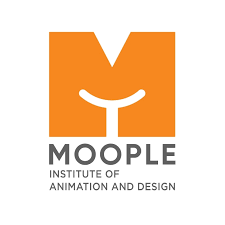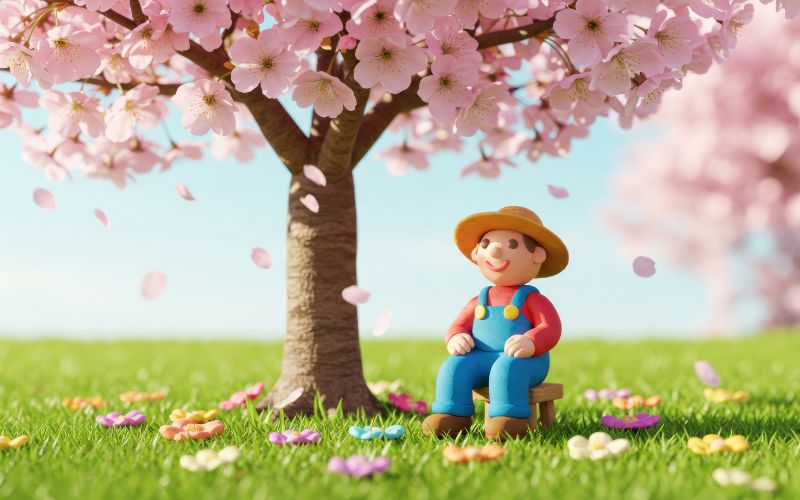You may have seen it on social media or streaming services: classic 2D cartoons are coming back. Not just for nostalgia, but as significant competitors in the animation business today. 3D is practical and realistic, but companies are going back to hand-drawn styles, endearing frame-by-frame quirks, and the gentle imperfections that only 2D animation can provide.
But why now? What is making this happen?
Let’s break down the main difference between 2D and 3D animation. How they impact storytelling and why audiences are suddenly craving the familiar comfort of 2D again. And most importantly, what it means for anyone considering a career in 3D animation.
What’s the Difference Between 2D and 3D Animation?
Let’s go over the essentials first.
2D animation is the old-fashioned way to draw or move things in two dimensions. You might think of cartoons like Klaus, Tom and Jerry, The Lion King (1994), or newer ones. Animators may either create each frame by hand or utilise rigging methods in 2D software to make things seem like they’re moving. It looks like a picture on a flat surface.
In contrast, 3D animation employs models that have height, breadth, and depth. Characters are built in software, given images and a skeleton, and then animated using motion pathways. Think about movies like Minions, Toy Story, or Frozen.
Each style has its own merits. But in the previous several decades, 3D has become more popular, especially in movies with big budgets. So why is 2D coming back now?
The Appeal of 2D in a 3D-Saturated World
It’s not that 3D is going away, far from it. But people are feeling something they didn’t realise they missed: simplicity, artistry, and character in every frame.
A 2D animation course feels more personal. You can often see the artist’s hand in the work. A quirky walk cycle or subtle shift in expression feels handcrafted. It’s not perfectly polished — and that’s the point. It speaks to us in a different, more emotional language.
And audiences are responding.
With the rise of platforms like YouTube, Netflix, and even TikTok, more creators are experimenting with 2D. Indie animators and storytellers with smaller teams (and budgets) find 2D faster to produce. It’s accessible and lets creativity shine without the need for giant render farms or ultra-realistic shaders.
Storytelling Power: 2D’s Emotional Edge
You can observe how visual style affects emotion when you see something like Kubo and the Two Strings. Or watch an anime like Your Name. The 2D style makes it easier for people to identify with the characters. That intimacy is harder to recreate with 3D unless you’re Pixar.
Many studios are embracing this. Disney’s The Princess and the Frog, Cartoon Saloon’s Wolfwalkers, and Studio Ghibli’s entire library prove one thing: you don’t need 3D to tell a powerful story.
Cost and Time: The Practical Side of the Debate
To be honest, 3D animation costs a lot of money. 3D work might take months to finish even a short film because of modelling, rigging, lighting, rendering, and post-processing. Studios frequently need big teams with people who are good at using multiple tools and workflows. That’s terrific for big movies, but not so much for tiny studios or independent filmmakers.
2D animation is faster and more direct, particularly when done with contemporary technologies like Toon Boom or Adobe Animate. Animators don’t have to make things seem genuine or wait for renderings; they simply animate.
That efficiency is alluring in today’s environment of fast-paced content.
The Rise of Hybrid Animation
It’s interesting that you don’t necessarily have to choose one over the other. Some studios combine 2D and 3D to get the best of both worlds.
Spider-Man: Into the Spider-Verse looks like a comic book because it utilises 3D models and 2D animation techniques, including linework, halftones, and speed lines. What did it lead to? A piece of art that broke the mould.
This “hybrid” method is opening doors for animators from both backgrounds to collaborate and innovate.
Training Matters: Choosing Between 2D and 3D
Here’s the question: if you’re starting fresh, which one should you learn?
It depends on your goals.
Training in 2D animation may help you get jobs in TV, advertising, making videos for YouTube, and more. You’ll learn how to create characters, rig them, use motion concepts, and convey stories in a way that only flat animation can. A 2D cartoon animation course also teaches frame-by-frame approaches, which are great for those who want that old-fashioned look.
On the flip side, a 3D animation course might be more your speed if you want to work on feature films, VFX-heavy productions, or AAA gaming. 3D animators need to understand modelling, physics, and timing in a space that mimics real-world environments.
Both require patience, practice, and creativity. And increasingly, studios are looking for animators who can understand both.
What About Career Scope?
In the long run, there will always be a need for both skill sets, but the jobs are different.
If you work in 3D animation, you may work in huge movie studios, architecture, product design, or gaming. It requires a lot of tools, is technical, and works with others. For example, an advanced 3D animation course in Kolkata equips students with industry-grade skills in modelling, rigging, lighting, and realistic character animation.
2D animators are often hired by creative companies, entertainment studios, and even teams that make educational videos. 2D skills are in high demand again now that mobile content, motion graphics, and online learning are so popular.
India is becoming a centre for outsourced animation production; therefore, there is a demand for qualified workers in both disciplines.
What Recruiters Are Looking For
Here’s the inside scoop. Recruiters don’t just want someone who knows software — they want someone who tells great stories.
You could master Maya or Blender, but if you can’t communicate feeling through a character’s posture or pace a scene with emotional rhythm, your work won’t land.
So yes, technical skills matter. But storytelling matters more.
2D or 3D, the animators who thrive are the ones who think like filmmakers, not just technicians.
Animation’s Cultural Pull: Why It Feels Good to Go Back
There’s something warm and nostalgic about 2D.
For many people, it connects them to childhood memories — the Saturday morning cartoons, the comforting clumsiness of hand-drawn motion, or the colours that didn’t try too hard to be “real.”
2D speaks to culture. Anime is thriving. Independent short films with 2D flair are winning festivals. The style reminds us that you don’t always need realism to make something feel real.
Training With The Right Academy Makes All the Difference
Master 2D & 3D Animation with Moople Academy
Want to create animations that stand out — whether hand-drawn or hyper-realistic? Moople Academy’s 3D animation course in Kolkata helps you master the fundamentals and the future of animation.
We don’t just teach you how to animate; we guide you through the entire journey — from storytelling, design, and software to industry exposure.
Here’s why we stand out:
- Full Curriculum: Kolkata students believe that we cover everything, from the foundations of drawing to rigging and post-production. This is true whether they are obtaining a 2D cartoon institute of animation or an advanced 3D animation degree.
- Live Projects: Our students do actual work that gets them ready for client work, studio pipelines, and their own portfolios.
- Help with your career: We help you get ready for work. Moople mentors are there for you every step of the way, from demo reels to internships.
- Hybrid Skill Development: If you learn both approaches, you’ll be ready for whatever the animation business throws at you next.
Do you wish to create digital material, movies, or TV shows? Moople is a good place to begin. We can help you become an animator who stands out in both style and story, whether you’re a tech-savvy developer or an artist at heart.
Conclusion
In animation, it’s not about setting one style against another. It’s about what each one can do. People want tales that are more emotive, warm, and true art; hence, 2D is coming back, not because 3D isn’t working. In the meantime, 3D continues pushing the boundaries of realism, spectacle, and immersive experiences.
And what if you’re new to this? Don’t worry about which one is “better.” Get to know both of them. Take a look around. Give things a try. Animation is a language, and the better you are at both languages, the better your work will be.
FAQs
1. Is it simpler to learn how to animate in 2D or 3D?
Starting with 2D is typically easier since the tools and steps are clearer and simpler. But they both require a lot of work and imagination.
2. Is it possible to move from 2D to 3D later in my career?
Yes, for sure. Many professionals start out in one field and then go on to another. Timing, emotion, and movement are still quite important in animation.
3. Is 2D animation going away?
Not at all. Digital technologies, streaming content, and independent artists are all helping it come back on various platforms.
4. What type of software do animators use?
Toon Boom, Adobe Animate, and Krita are some of the most popular applications for 2D animators. Some studios allow 3D artists to work using Maya, Blender, or Cinema 4D.
5. Do animators in India have jobs?
Yes. Animation and special effects are becoming increasingly popular in India. In locations like Kolkata, Mumbai, and Bangalore, studios usually hire animators who are good at both 2D and 3D animation.

